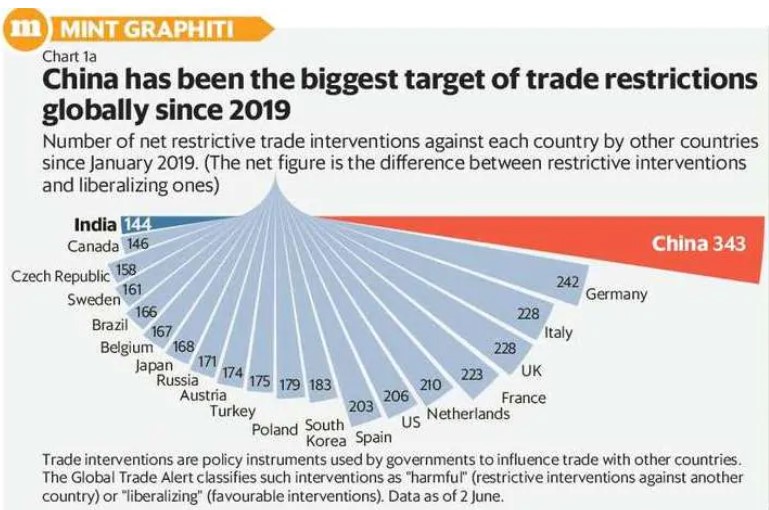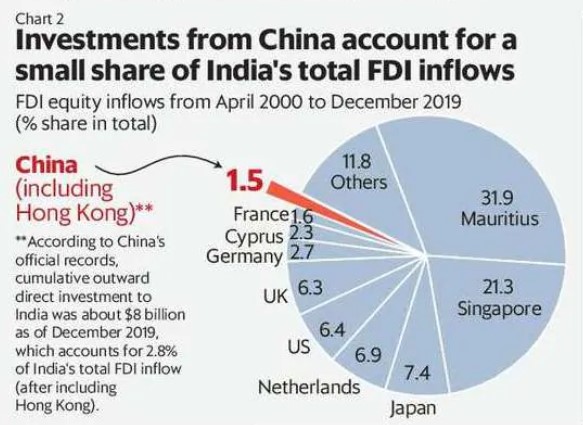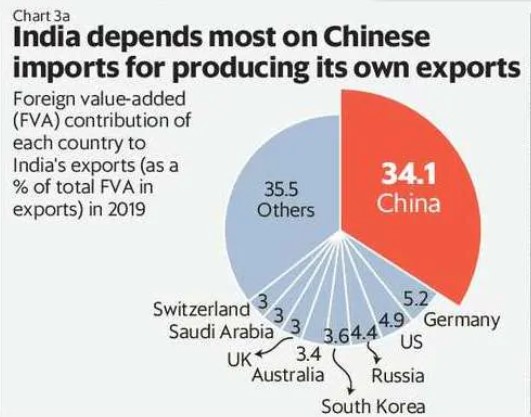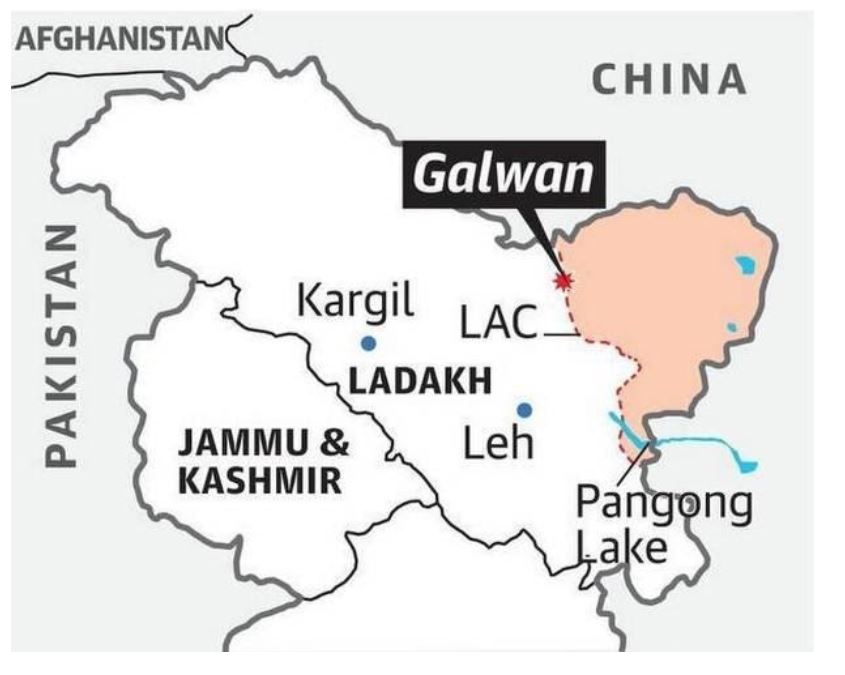India and China wrote history when the informal summit was announced to be held at Wuhan. Following the announcement, Indian Prime minister and Chinese President met at the city of Wuhan on 27th April 2018.

This meeting was intended to exchange the views on overarching issues of bilateral and global importance. They Shared the view that peaceful, stable and balanced relations between India and China will be a positive factor for stability amidst current global uncertainties.
India and China share one of the longest boundaries along himalayan mountains. But do not share the same interests in most of the issues. What is the reason for the differences? How badly are these differences affecting each other’s national interests? What needs to be done to overcome these differences ? What is the way for national and regional prosperity? Let’s find answers to all these questions.
Historic ties between India and China
India and china have had relations sustained for more than 2000 years. First records of such a relationship was mentioned during 2nd century BCE. Chanakya, the minister of Mauryan empire has referred to Chinese silk in Arthashastra.
Buddhism has been the strongest bond between two countries. China has the largest Buddhist population in the world which comprises of 18.8% of the Chinese population.
Bilateral relations are dominated by trade commerce and People to people contact. Spices, Opium and Tea were the major products traded between the two big states. Various travelers including Hsuan Tsnag visited the silk in 7th century AD. In the very dynamic world scenario, bilateral relations deteriorated gradually.
From when did the relations deteriorate?
Advent of British rule in india and emergence of colonialism sowed the seeds of disputes between india and china. Mercantilism and Expansionary policies of British lead to Anglo china which are popularly named Opium wars. The effect of such war was so devasting that, even after independence India and china struggled to build cordial relations.
The early part of Post-Independence period, China and India had intimate bilateral relations characterised by mutual support and cooperation in many decisive national, regional and international issues.
This was followed by the signing of Panchasheel agreement in 1954 between New delhi and Beijing which was not adhered to.
India viewed the agreement as an opportunity to promulgate its anti-colonial posture. But China saw in this expression of ‘Communist solidarity and a means to check the growing anti-communist sentiments in the West.
Imposing communist ideas on India started with 1962 Indo chinese war. It is considered a violation of Panchasheel and the relations dwindled from then on.
India and china bilateral relations
- Political
- It marks the year of the 70th anniversary of the establishment of diplomatic relations between China and India.
- It is also China-India Year of Cultural and People-to-People Exchanges, where the two sides agreed to hold 70 celebratory activities to demonstrate the historic connection between the two civilizations as well as their growing bilateral relationship.
- There are 50 dialogue mechanisms between China and India for exchanging views on various topics of bilateral, regional and global concern.
- Heads of both the states met at Wuhan informally to boost the ties.
- Chinese president came to india for 2nd informal summit at Mamallapuram in 2019.
- Trade
- Trade relations have exponentially increased between India and China.
- In 2019, the trade volume between China and India was $70.3 billion. India has a trade deficit of around 50 billion $ with china.

- Chinese exports to India stand at around 15 billion $ and 2% of chinese exports.
- With a combined market of over 2.7 billion people and a GDP of 20% of the world’s total, China and India enjoy huge potential and broad prospects for economic and trade cooperation
INDIA-CHINA TRADE AMID PANDEMIC
Restrictions on China

- Latest data from Global Trade Alert shows it has faced more trade restrictions than any other country since 2019.
- The fear of predatory investments in the wake of covid-19 disruptions has made India more alert, but analysts and diplomats have been sounding alarm over it for a very long time.
- India’s FDI measure against its neighbours came days after the Chinese central bank raised its stake in HDFC to over 1% in April.
- To be sure, China’s investments, even after including Hong Kong, contribute only a tiny share in India’s total FDI inflow.
- This holds true even if one goes by China’s numbers, which are higher.
- Given the small FDI share, some of the fears may even be exaggerated because of the growing mistrust towards Beijing, but not all of it.

China’s Debt-trap Diplomacy
- Research shows developing countries owe much larger debts to China than was earlier believe.
- They allege many loans to build infrastructure projects using Chinese contractors in strategically located developing nations are a form of debt-trap diplomacy.
- China is accused of extending excessive credit with the intention of extracting economic or political concessions when countries cannot honour their debts. This raises fears that China’s credit to countries such as Pakistan, Sri Lanka and Nepal could be a strategic disadvantage for India.
India’s Dependence on Chinese Imports

- India must remember that even though its widening trade deficit with China remains an eyesore for policymakers, dependence on Chinese products has only grown year after year.
- In 2019, Chinese imports alone accounted for 34% of all the foreign value-added in India’s exports, data from the United Nations Conference on Trade and Development shows. In 2009, this figure was just 1.8%.
- Over the last decade, India’s dependence on China for inputs for the manufacture of drugs and consumer goods has shown a marked increase. All this will matter even more in this time of crisis after the coronavirus.
- A strengthening anti-China sentiment and louder calls for self-reliance could actually go against India’s interests and economic logic.
3. Investment
- Seven Indian Banks have opened branches in China. Chinese bank and ICBC have branches in India.
- Chinese investment is predominant in Indian start-ups. Companies like Ola, Uber, Swiggy, Flipkart have chinese stakeholders.
- Cumulative Chinese investment in India is around 5 billion $ including the recent purchase in HDFC bank
- The cumulative Indian investment in China till March 2017 reached US$ 705 million
4. Defence
- India China take part in Hand-in-Hand’ joint anti-terrorist exercises to enhance mutual understanding and trust, exchange training experiences and jointly improve anti-terrorism capabilities.
- China-India defence and security consultations take part to strengthen exchanges and cooperation in the defence field.
- Defence partnerships and military exercises are possible if the diplomatic relations are strong and disputes are less or absent. Between India and China, there are very less defence related partnerships.
5. People to People
- The number of Indian pilgrims to Xizang Autonomous Region of China has surged from several hundred in the 1980s to more than 20,000 in 2019
- There are around 25k Indian students studying in Chinese universities. 90% of the students are studying medicine. Chinese medical colleges attract students as the fees is relatively less and infrastructure is better.
India and China signed Education Exchange Programme (EEP) in 2006, which is an umbrella agreement for educational cooperation between the two countries.
Presently, relations between India and China are disturbed by Chinese friendship with Pakistan. China sees India as the potential competitor in the region. Beijing is taking advantage of hostile relations between India and Pakistan to counter Indian dominance. This attitude has given rise to various differences between the two states.
What are the Various differences between the two states
- Nature of state – India is the world’s largest democracy. It has the lengthiest and written constitution. India’s democracy has evolved over the years to become more inclusive and ensure rule of law.
- On the contrary, China is a communist state with no freedom of speech and right to life. China is trying to influence communist authority through internal and external forces.
- On the contrary, China is a communist state with no freedom of speech and right to life. China is trying to influence communist authority through internal and external forces.
- Boundary dispute – India and china share a border of around 3488kms. Present border dispute is result of irregular British policies. British sometimes advocated farther northern Kashmiri border in the form of Johnson Line where Aksai Chin was part of Kashmir and another time when they advocated McDonald line under which Aksai Chin falls under Xinjiang Province of China. As a result the disagreement, prevails with India claiming Johnson Line to be correct and China claiming McDonald Line to be correct.
- Along the Eastern border a boundary demarcating Tibetan region of China and the North-east Frontier Areas of India (current Arunachal Pradesh) was agreed upon by British and Tibetan representatives which came to be called the McMahon Line.
- This is another contentious issue because China does not recognize the McMahon line as it was signed between British and Tibet in the absence of China.
- India on its part recognizes Chinese sovereignty over Tibet and accepts McMahon line to be the official boundary.
- Indian support to Tibetian independence has angered China.

Galwan Valley:
- The valley refers to the land that sits between steep mountains that buffet the Galwan River.
- The river has its source in Aksai Chin, on China’s side of the LAC, and it flows from the east to Ladakh, where it meets the Shyok river on India’s side of the LAC.
- The valley is strategically located between Ladakh in the west and Aksai Chin in the east (currently controlled by China)
- At its western end are the Shyok river and the Darbuk-Shyok-Daulet Beg Oldie (DSDBO) road.
- Its eastern mouth lies not far from China’s vital Xinjiang Tibet road, now called the G219 highway.

Read more: INDIA – CHINA LAC STANDOFF
- Predatory economics – Chinese goods In the Indian market have disrupted the local manufacturing. From tempered glass, plastic toys, mosquito repellant bats to the mobile phones and solar panels are made in China. By the export promotion schemes and incentives by Communist government, all these products hit the Indian market with low price compared to Indian counterparts.
- Such trade distorting subsidies are opposed by Indian government by imposing Anti-dumping duties on chinese products.
- There is a huge support for Being vocal towards local and boycotting Chinese goods.
- BRI – Belt and Road initiative by China is aimed towards capturing markets for chinese goods and establish china as the global power in the near future.
- India is the only neighbouring country that has opposed BRI, by refusing to attend its meeting.
- India is against CPEC in Gilgit Baltistan region, which undermines the Indian sovereignty.
- CPEC is a network of highways, railways, and pipelines accompanied by energy, industrial, and other infrastructure development projects linking the Western part of China to the Gwadar Port in Balochistan, Pakistan running some 3000 km from Xinjiang to Balochistan via Khunjerab Pass in the Northern Parts of Pakistan.

- The Karakoram Highway known by its initials KKH violates India’s territorial sovereignty. It is also known as N-35 or National Highway or the China-Pakistan Friendship Highway) is a 1,300-kilometre (810 mi)national highway which extends from Punjab province of Pakistan to the Khunjerab Pass in Gilgit-Baltistan, where it crosses into China and becomes China National Highway 314.
- Asylum to Dalai Lama
- In 1951, Tibetan-Chinese agreement was signed in which the nation became a “national autonomous region” of China, under the traditional rule of the Dalai Lama but actually under the control of a Chinese communist commission.
- The highly religious people of Tibet, suffered under communist China’s anti-religious legislation.
- After years of scattered protests, a full-scale revolt broke out in March 1959, and the Dalai Lama was forced to flee as the uprising was crushed by Chinese troops.
- A few weeks later, Indian then PM Nehru welcomed him in Mussoorie and formally offered him asylum.
- With the beginning of the Cultural Revolution in China, the Chinese suppression of Tibetan Buddhism escalated, and practice of the religion was banned and thousands of monasteries were destroyed.
- Tens of thousands of Tibetans followed their leader to India.
- River water sharing
- China has more number of dams than any other country in the world and has no water sharing agreement with any of its neighbours.
- China is upper riparian state and maintains absolute territorial sovereignty.
- Dams built on Brahmaputra river adversely impact India which is at the downstream.
- Chinese officials sometimes reject to share the information about the water level causing grave damage in North Eastern states.
Efforts to overcome the border disputes
- Shimla agreement 1914- McMahon line was established and was accepted by Tibet and British Indian authorities. Chinese authorities have been against this from 1914 till today as they believe that Tibet was not a sovereign authority with no power to conclude any treaties.
- Panchasheel is a set of Five Principles of Peaceful Coexistence to govern Mutual relations. They are
- Mutual respect for sovereignty and territorial integrity
- Mutual non-aggression
- Non-interference in each other’s internal affairs
- Equality and mutual benefit
- Peaceful co-existence
- 1989 CBM- Confidence Building Measure policy was aimed to settle disputes mutually and peacefully.
- Line of Actual Control- India considers Aksai chin as a part of India and China as theirs, both of them follow a different line of control but in 1993 PM Narasimha Rao agreed to maintain peace along LAC which separates Jammu and Kashmir from Aksai Chin.
- 2003 Principles for Relations & Comprehensive Cooperation- It was a three-step process where both sides prepared their maps and exchanged for each other’s approval. China accepted India’s authority over Sikkim.
- CBM in 2005- Both nations agreed to implement modalities in CBM along LAC.
Coordination along Border- In 2012 both countries used common terms for working methods regarding the Indo-China border.
- Prime Minister Narendra Modi and Chinese President Xi Jinping held their first informal summit in April 2018 in the Chinese city of Wuhan, months after the Doklam standoff.
- In the summit, the two leaders decided to issue “strategic guidance” to their militaries to strengthen communications so that they can build trust and understanding.
- Modi and Xi held their second informal summit in Mamallapuram near Chennai in October last year with a focus on further broadening the bilateral ties.
- Both sides have been asserting that pending the final resolution of the boundary issue, it is necessary to maintain peace and tranquillity in border areas.
How are these differences affecting national interests
Firstly, Chinese aggression along the Line of Actual Control [LAC] is creating anti-chinese sentiments in India. This has resulted in campaigns to boycott everything that is chinese, including TIKTOK and chinese manufactured mobile phones. Even the India manufactured but chinese owned brands like, real me and Redmi mobile phones are not attracting customers anymore. This is limiting the customer base for Chinese brands.
Secondly, around 80% of Active Pharmaceutical Ingredients and most of the solar panels are imported from china. Manufacturing the same in India would escalate the costs for Indian firms making them less competitive in global market. So, Anti-Chinese sentiments adversely impact the manufacturing and exports in India.
Thirdly, Blanket or complete ban on chinese exports or imposing tariffs on chinese goods will lead to increase in prices of inputs. This ends up in increasing the prices of final goods and induces inflation in the economy.
Fourthly, Both China and India are fighting battle against COVID 19 pandemic. Border skirmish during COVID 19 pandemic diverts the attention, priority of government.
Fifthly, Political establishment in India will be under threat because any chinese intrusion is claimed as a failure of diplomacy and compromise reached by Political party in power. This makes the political establishment not to conclude anything that is against the national interest.
Sixthly, Chinese assertiveness in south china sea and string of pearls undermines freedom of navigation and sovereignty. Around 95% of India’s merchandise trade happens through sea waters. Freedom of navigation and rule based order is of utmost importance to India.
seventhly, Border disputes and unhealthy relations have increased pressure for military expenditure. India is the 4th largest military equipment importer in the world, by importing 1.53 billion $.
India has defence deals with Russia to procure S-400 anti-aircraft weapon system. India is purchasing Rafael from France by 2024. India is building its potential to face two front war at any time in the future. In the absence of these differences, the same money and effort could be diverted towards developmental activities.
Eighthly, around 20 indian soldiers were killed during the skirmish at the LAC recently. There were reports of Chinese army suffering around 35 casualties. Such loss of trained, Patriotic man power is a grave loss to the country.
The impact of hostile relations with India on Chinese economy and polity are also immense.
Firstly, around 3% of the chinese exports are routed to India. Such anti-chinese campaigns to boycott everything that is chinese can affect chinese exports to india, affecting the employment and job creation in China.
Secondly, recently indian government cancelled around 3000 crore rupees project for Railway signaling system given to a chinese company. Trust deficit and hostile relations with India has the potential to drain China economically
Thirdly, india is planning to keep out Huawei from 5G spectrum auction, saying that, the devices of Huawei do not adhere to the privacy norms. India government recently banned 59 mobile applications of chinese origin. These allegations on chinese firms are increasing due to the trust deficit and expansionary nature of the state polity Such government policies hit chinese economy.
Fourthly, increasing clashes with china is making India ally with United States. United states sees India as an opportunity to counter chinese dominance in the region. Cordial relations with India is at the best interest of China.
Fifthly, India is the world’s largest democracy. Chinese intrusion into the Autonomous state of Hongkong by trying to erode its autonomy is seen as a threat to democracy across the world. Indian support is crucial in maintaining peace and tranquility in china.
Sixthly, India is fastest growing economy in the world, with huge demographic dividend. China is the second largest economy and regional power. Both china and India are part of regional organizations like, SCO, BRICS, RIC. Tussle between the giants hinders the national, regional and global interest.
Why is it difficult for India to become Atmanirbhar by boycotting Chinese goods?
- China is India’s second-largest trading partner after the US.
- It accounts for nearly 12% of India’s imports across sectors such as chemicals, automotive components, consumer electronics and pharmaceuticals while only 0.9% of chinese were from india.
- At least 70% of India’s drug intermediary needs are fulfilled by China,
- Smart phones and most of the electronics goods are imported from china at low cost.
- companies like Alibaba and Tencent are strategically pumping billions of dollars into Indian start-ups such as Zomato, Paytm, Big Basket and Ola.
- Chinese giants deeply embedding themselves in India’s socio-economic and technology ecosystem,
- 90% of india’s toy market and 50% of india’s bicycle market is dominated by chinese goods
Whereas, China’s exports to India account for only 2% of its total exports, so even if Indians boycott all the goods imported from China, it will not make a big impact on China.
China has differences with many states.
- China is facing border disputes across all the directions. Resolving these border issues is good to Chinese domestic stability.
- Senkaku island is disputed between Japan and China. These
Eight uninhabited islands and rocks in question lie in the East China Sea. They have a total area of about 7 Sq km and lie to the northeast of Taiwan
- Twang region of Arunachal Pradesh, dokhlam in Sikkim, Pangong Tso, Galwan valley in J&K are disputed between China and India.
- China claims the disputed islands in South china sea along the 9 dash line. ASEAN nations like, Philippines, vietnam, Malaysia, Brunei are upset with China for such domination. China violated the judgement of UNCLOS which rejected the chinese claims and ordered to set up freedom of navigation and rule based order.


- China is using its economic clout for providing huge loans to economically unviable projects. This results in smaller nations like, Sri lanka, Maldives and other eastern african nations not able to repay the loans provided by China. As a compensation, these countries lease out a strategic port or a land to china.
- China is setting up ports across the Indian ocean. Few examples of these ports are, Djibouti in horn of Africa, Gwadar in Pakistan, Hambantota in Sri Lanka, Kyaukpyu in Myanmar.
- These are called string of pearls in the Indian ocean. These ports are of strategic importance to china to exercise dominance in the Indian ocean. It is a good example for chinese expansionary foreign policy. Such a predatory foreign policy has been condemned by majority of democratic countries.
- China is the manufacturing hub of the world. Various electronic and capital goods are manufactured in China and exported all around the world. China has achieved this ability by providing export incentives and Dumping duties to its exports to make it competitive in the international market.
- All the major powers including USA is turning protectionist in order to create more employment in their nation. USA and China are at loggerheads on tariffs. There is a huge tariff war that is on between the top two powers of the world.
- All these coupled with explosion of Corona virus in the city of Wuhan and its global spread, pread, has created anti-chinese sentiments worldwide. Virus is being called as Wuhan virus in order to attach chinese link to the explosion. China being opaque on the explosion, Human to human transmission and the number of deaths has made the world look at China in a more derogatory way.
How to overcome the differences between India and China?
- Both nations need to master the four keys of:
- Leading: It means to reach consensus and guide the direction of the development of bilateral relations under the guidance of leaders from both nations.
- Transmitting: It means to transmit the leaders’ consensus to all levels and translate it into tangible cooperation and outcomes.
- Shaping: It means to go beyond the mode of managing differences, shape bilateral relations actively and accumulate positive momentum.
- Integrating: It means to strengthen exchanges and cooperation, promote convergence of interests and achieve common development.
With both the leading nations on board, sharing vision of regional peace and development is a win- win situation for all.
Related articles:
INDIA, CHINA HOLD DIPLOMATIC TALKS AMID BORDER TENSIONS
THE DE-ESCALATION ROAD MAP FOR INDIA AND CHINA
INDIA TO BOOST INFRASTRUCTURE IN AREAS ALONG CHINA BORDER
CHINA TO BUILD POWER PROJECT IN POK DESPITE INDIA OBJECTION
India looks ready for long stand-off with China, may not stop border infra work



